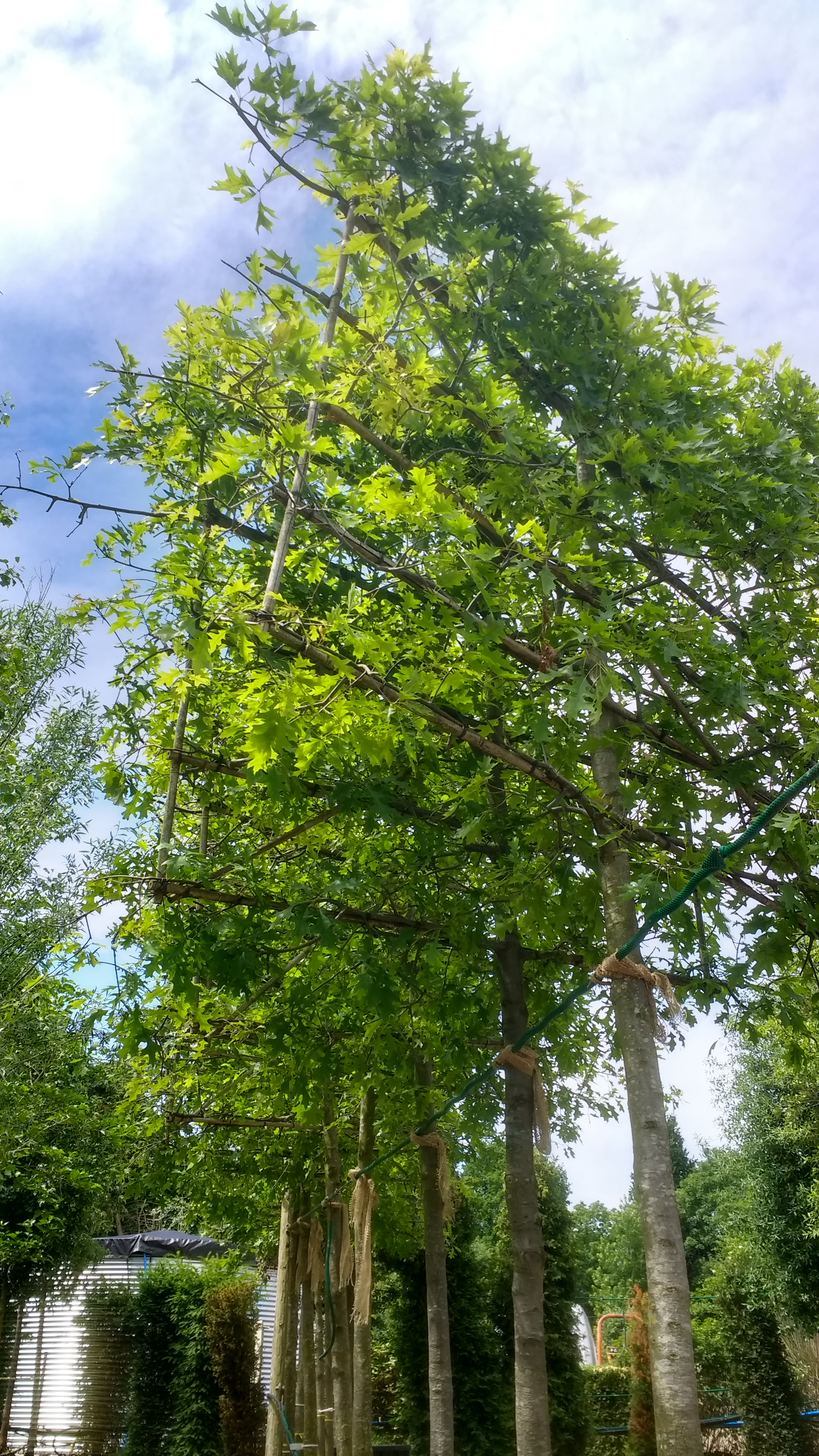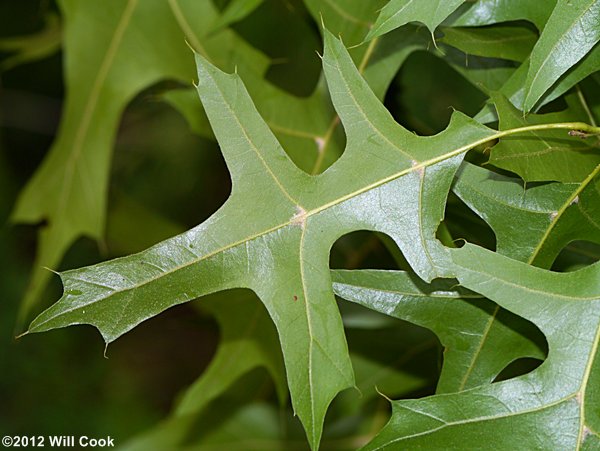
The pin oak’s midsummer iridescent glow, as well as the leaves’ longevity, makes it a hugely popular ornamental display.

It was named thus for its pyramidal manner of growth in its branches and deeply pinnatifid leaves. The term pin oak first came into language circa 1805-1815, in Native American circles. Historically, the pin oak’s bark was in high demand among a variety of Native American tribes, who would extract the liquid (via distillation or immersion in boiling water) to make a beverage which was thought to be effective treatment for intestinal pain. Some reach the pistils of developing acorns and polinate them. These are called katkins they look like a section of grapevine, with the "grapes" being small, spherical yellow buds that release thousands of pollen grains into the wind when they open.

On the same tree, other buds grow to produce male flowers. Pollen and female flowers appear at different times on the same tree, enabling male gametophytes (pollen grains) to travel by wind and catch on the pistil of another tree's flowers. The ovary walls become the acorn upon fertilization, while the flower's petals and sepals fuse into the acorn "cap." Like most monoecious species, pin oaks tend to avoid self-breeding. In March and April, provided that weather has been consistently optimal (warm & sunny), some of these cells will swell into a vase-shaped ovary topped by a pistil (looks like a fuzzy, tiny knob) which captures wind-blown pollen. A monoecious specimen, the pin oak's twigs will have both male and female flowers. Reproductive StructuresĪcorns start out as a small cluster of cells at the tip of the pin oak branch before flowering. The bottom of the leaf usually contains tufts of pale hairs in the axils of the veins. The leaf surface is dark green, and paler on the underside. The leaves are smaller than in the red oak, and contain much deeper, more fractured lobes. variety), and possess wide, circular sinuses. They are bristle tipped, deeply lobed (5 to 7 lobes, but most frequently 7, in the Northeast U.S. The pin oak's short lifespan is chalked up to its status as a fast-growing pioneer, or riparian, species.įor the average-sized pin oak, leaves range in length from 3 to 6 inches long. Compared to most other oak species which can live for several centuries, pin oak are relatively short-lived reaching a maximum lifespan of 120 years. The uppermost branches are directed upwards, the middle branches extend directly parallel to the ground below, and the lower branches are droopy, bending slightly downwards. The canopy is considered one of its most distinctive features. The mature, 40 year-old tree possesses rough bark with its branches arranged in a loose, spreading canopy. The 10-year-old pin oak will be roughly 8 meters tall and possess a straight, cylindrical trunk with smooth bark. Growth proceeds slowly for the first 20 years - around the time acorn production begins - and thereafter accelerates markedly. My pin oak measures 22.3 meters in height, placing it among the tallest trunk diameter is 0.79 meters. The trunk's diameter (base) can reach 1 meter and only rarely exceeds this size.
#Pin oak leaves full#
Relative to other deciduous trees, the pin oak is medium-sized at maturity, reaching a full height of 18–22 meters.

A majority of water and nutrients taken up by the tree's vascular transport tissues are absorbed by the leaves, and the process demands incredible energy expenditure. Oaks undergo abscission for a number of reasons the pin oak does so to conserve water and nutrients during the drier seasons. The pin oak is also deciduous, meaning that it will abscise, or shed, its leaves each fall after dropping its zygote-bearing acorns. The fruit of Quercus palustris is the acorn, roughly 15,000 of which will be produced by any given Pin Oak each year. hermaphroditic) reprodcutive capacity, and cupule-shaped fruits. Plants of the Fagaceae family are distinguished from otheres by their simple leaves with pinnate venation, monoecious (i.e. The pin oak refers to a red oak (Genus, Quercus Section, Lobatae) of the Fagaceae Family.


 0 kommentar(er)
0 kommentar(er)
